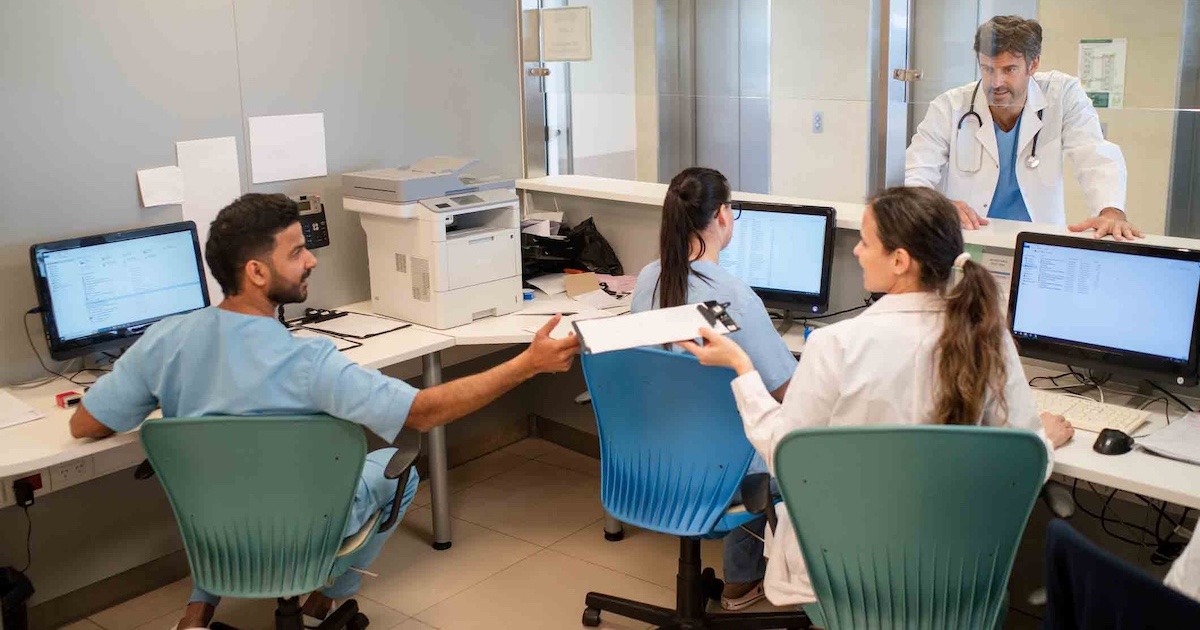As Jonathan Linkous sees it, healthcare is a traditionally slow adopter of technology, about 15 years behind the finance and hospitality industries, to name just a couple. So while they're enjoying the benefits of digital technology, the CEO of the American Telemedicine Association said, "we just haven't gotten to that spot yet."
Linkous, part of a special panel discussion on Wednesday at the 2013 International CES titled "Accessible Healthcare: Addressing the Impact of Telehealth Solutions," sees evidence that healthcare is moving in that direction. For instance, he said, in the past year, 5 million people have had their X-rays read by a radiologist in another location, 1 million pacemakers are monitored remotely, and 10 percent of all intensive care unit patients are monitored by specialists who aren't in the ICU.
And yet, he added, while a pilot can fly around the world with one license and a person can drive across the country with just one driver's license, physicians need a different license to practice medicine in each state.
The lunchtime panel discussion was sponsored by the Consumer Electronics Association (CEA) and HealthSpot, whose HealthSpot Station mobile medical kiosk is on display in one of the CES exhibit halls. Aside from Linkous, it included Peter Tippett, MD, PhD, vice president of Verizon's Connected Healthcare Solutions business; John F. Jesser, vice president of provider engagement strategy at WellPoint; and Leslie Kelly Hall, senior vice president of policy for Healthwise.
The idea that healthcare is finally taking notice of the consumer electronics market isn't lost on CEA CEO Gary Shapiro, who noted that digital health and fitness is a fast-growing segment of the massive show, with more then 220 companies carving out their exhibit floor niches this year.
The key, said Jesser, is that the consumer – the patient – is now taking control over his or her healthcare. In what has traditionally been a doctor-centric landscape, that's creating opportunities for much-needed change.
"The consumers want convenience," he pointed out.
Hall called patient-centered healthcare "a pivotal change in healthcare," because it's forcing providers to take a look at how they deliver healthcare and find ways to improve the experience. They now have to deal with patients who want and have a say in their healthcare decisions, she said.
"There is an emerging change and I think what's going to drive this is mobile access," she said.
Tippett agreed, adding that, while payers seems to be embracing the telehealth movement, large employers are really setting the pace. They're bearing the brunt of rising healthcare costs, he said, and looking for opportunities not only to cut insurance and healthcare costs, but to fashion a healthier employee base by promoting health and wellness tools and strategies.
So what's holding things up? A provider system hesitant to change the status quo, said Linkous, and a sometimes overbearing legal and legislative network with too much red tape and too many outdated mandates.
Linkous pointed to one trend that may lead to the so-called "a-ha moment" in telehealth: three lawsuits brought by patients against providers who did not provide access to telemedicine, all settled out of court. Soon, he said, the courts are going to side with patients in saying that access to telemedicine is a standard of care, and then the providers are going to make sure they provide those services.


